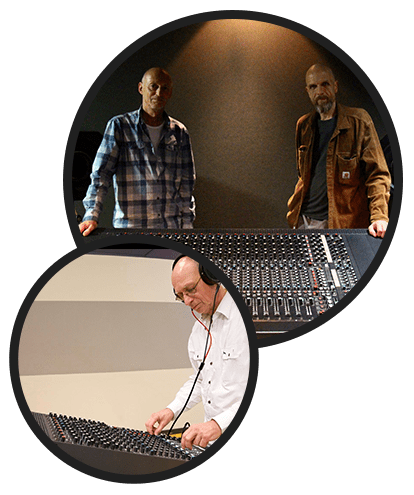Zähl Elektronik-Tontechnik has been a manufacturer of analogue studio technology for more than 35 years. The current range of products stands for top technology. Present flagship is the AM1 analogue mixing console, which has no equal anywhere in the world. Its users include numerous internationally renowned music makers and producers.
History
Michael Zaehl started his professional career in 1978 as a sound engineer's assistant in Conny Plank's studio, where legendary recordings were made (e.g. by Kraftwerk, Brian Eno, DAF, Ultravox, Gianna Nannini, Eurythmics and many more). Michael Zaehl gained experience working in the studio, but then turned to technology. During his time in Conny's studio, he created his first custom-made mixing desks, e.g. for Conny’s recording truck and for CAN studio. Michael Zaehl went into business for himself in 1982. In 1985, he custom-built the large 56-channel mixing console, which remained in service at Conny's Studio until the end. Zaehl’s focus always remained on analogue technology, mostly custom-made or small series. Over the years, numerous mixing consoles and other products for music production studios or mastering studios, for public and private broadcasting stations and many more were created. Later, the portfolio also included a product line for pure broadcast applications.
Work Setup
Zähl is a relatively small size, personally run company. Circuit development is Michael Zaehl’s domain, as well as bringing product to series production, whereby the ideas and experience of committed and qualified employees flow in. Production steps where the use of large production machinery make sense, such as SMT PCB assembly, front panel and mechanical manufacturing, are carried out by selected external partners. In-house, all individual parts are tested, sensitive components are added, the internal wiring is prepared and finally all components are carefully assembled into the final product. Before delivery, each product undergoes an elaborate 100% single-unit inspection. This method of working combines the advantages of modern, effective production techniques and careful, qualified manual work.
Concept - Design
Due to the numerous custom-made products, it has always been a matter of course for Michael Zaehl to develop products very close to the respective application. For about 12 years now, this claim has become even more solidified. The Berlin musician and music producer Mark Ernestus supports the conceptual development work. He brings in his experience and contributes a bundle of creative ideas.
Analogue vs. digital?
Zähl was founded when digital audio technology was still in its infancy. High-grade studio technology was analogue. As the quality increased, digital technology took over a large part of the applications and many believed that analogue technology would be displaced. Today, it is clear that analogue and digital technology can coexist perfectly, as both have their advantages in terms of sound and functionality. In creative recording studios, they stand side by side, with high-quality analogue technology steadily gaining relevance. In the high-end sector, analogue technology has always maintained its place. However, here too the demands are increasing - to the advantage of the Zaehl brand.
Analogue is not vintage
Zaehl products are purely analogue, but not "vintage". Michael Zaehl stands for the conviction that with today’s means better products can be developed than was the case in the past. Moreover, the applications have changed extremely. A wealth of experience is an excellent basis, but only when openness to new things and an alert eye on the users are added, can really useful products be created.










